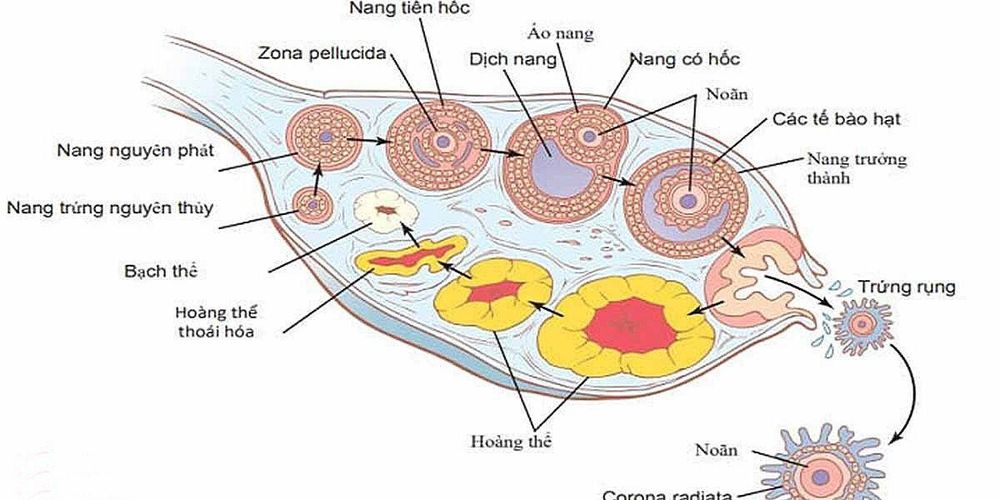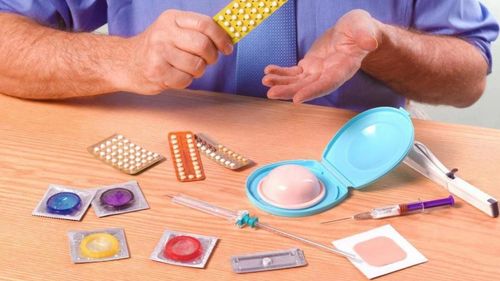This is an automatically translated article.
Pregnancy is a turning point of life. This article will provide you with some knowledge about the process of fertilization, implantation and embryonic development to answer the question: "How long does it take to conceive after sex?"
1. How is the embryo formed?
Embryo is the result of successful fertilization. That is, the fusion of two haploid male gametes, the sperm and the female ovum, to form a diploid zygote, which is the fertilized egg. This zygote will be the starting cell for all subsequent cells of the fertilized egg.
Therefore, it is not always possible to get pregnant by having sex. This also depends greatly on the number of sperm released at each ejaculation, and most importantly, whether the egg meets the sperm for fertilization to take place.
The ability of sperm to live in the female genital tract is 2 to 3 days. Female oocytes can only retain the ability to fertilize for about 6 to 24 hours. Beyond this time, the ovum can no longer be fertilized. Thus, the relationship depends on the date of ovulation to have the expected conception results.
2. How is the ovum formed?
Each menstrual cycle corresponds to an egg that will be released and that egg has the ability to conceive, called an oocyte. Once released, the oocyte - now ready for fertilization - is surrounded by a layer of mucus, is attracted to the fallopian tube and easily captured by the tubules. When reaching the speaker, the fallopian tube will move easily to the site of fertilization - the outer third of the fallopian tube - thanks to the peristalsis of smooth muscle in the fallopian tube.

Quan hệ có thai cần phụ thuộc vào noãn bào của phụ nữ
3. How long after sex to conceive?
If you have sex at the right time of ovulation, the sperm must go through the following stages to combine with the egg to form a zygote.During intercourse, sperm will mix with semen to form semen and be released into the female vagina by ejaculation. From the position of the sacs along the vagina, the sperm has a distance of about 20 cm to go to the appropriate place and carry out the fertilization process. With a normal body temperature of 37oC, sperm movement speed is 2 to 3 cm per minute. Therefore, the time required for sperm to reach the place of fertilization is from 90 minutes to 2 hours.
In addition to the ability to move on its own, the movement of sperm depends on many other factors that affect motility.
When it reaches the cervix, the semen solidifies in the sacrum and is retained there. After a period of time, about 1 hour, proteolytic enzymes present in the semen, thanks to the activation of the acidic pH of the vagina, will dissolve this clot and release the trapped sperm.
The most motile sperm will cross the cervical mucus barrier (CTC). The remaining sperm will be decomposed in the acidic pH environment of the vagina. The physico-chemical and immunological features of this barrier have an important influence on fertilization. Thus, the role of the cervical mucus plug is that the period before ovulation is most suitable for the passage of the CTC channel by sperm
Screening of sperms Initiating the process of spermatogenesis, by way to free sperm from binding with secretions of the testicles and prostate gland - substances that inhibit the sperm's ability to fertilize. Eventually, a few hundred of the “healthiest” sperm will reach the site of fertilization – the outer third of the fallopian tube, and fertilization occurs. And only one sperm will enter the egg to combine with the oocyte to form a zygote.
About 10 hours after sperm penetration, the male progenitor moves towards the female pronucleus. They merged about 10 hours later. Species-specific diploid chromosomes (chromosomes) are reproduced. After 35 h of penetration, the zygote will enter the 2-cell stage (blastoblast).
The fertilized egg will stay for about 48 hours in the tubal bulb. Finally, 3 to 4 days after fertilization, the fertilized egg has reached the uterus. After reaching the uterine cavity, it needs another 48 hours before adhering and implanting on the surface of the endometrium. The complete penetration of the egg into the endometrial layer lasts until about 11-12 days after fertilization. From this moment on, the fertilization and nesting of the egg has been successful.
Thus, calculating the total time of conception and embryo formation and this embryo to implant in the uterus will need a total time of about 10 to 15 days. This means that it takes about 10 to 15 days to know if you are pregnant after having sex.
4. At what time should I have sex to easily conceive?
The best time to get pregnant is to have sex at the most fertile time of your menstrual cycle. This period is called the “conception window” and lasts about 6 days, including the 5 days before ovulation and the day of ovulation. In which the 2 days before ovulation and the day of ovulation have the highest probability of conception. The way to calculate the time of conception is based on the viability of the sperm and the egg. The ability of sperm to live in the female genital tract is 2 to 3 days. Female oocytes can only retain the ability to fertilize for about 6 to 24 hours.
To accurately determine ovulation, you need to have a monthly menstrual cycle tracking calendar. So that I can know my period most accurately:
First: How many days is your menstrual cycle? (A menstrual cycle is counted from the first day you bleed - the first day of your period, which is day 1 of your period, and ends the day before your next bleeding). Currently, there are many very useful applications to help you keep track of your menstrual cycle. You just need to enter the date of the first bleeding of the month and the software will help you calculate and store and give you the number of days with high probability of conception. Second: Is your menstrual cycle regular or not? 4.1 With a regular menstrual cycle Normally, your menstrual cycle can range from 21 to 35 days. Average is 28 days. See how many days your cycle is, as your egg will be released 14 days before your next period (first day of your period).
Example: You have a 27 day cycle, so you will ovulate on day 13 (27 -14 = 13) of your cycle. You have a 28 day cycle, so you will ovulate on day 14 of your cycle.
Some women have varying lengths of periods up to 7 days. Therefore, the ovulation date of each menstrual cycle is also not the same.
4.2. With Irregular Periods Pay extra attention to your body to be able to recognize some of the signs that you are about to ovulate. These signs can occur about three weeks before the start of the next period. The signs are: increased mucus secretion in the vagina, appearance of white mucus like egg white, feeling of slight discomfort and heaviness on one side of the abdomen, increased libido, body temperature may rise to the highest. on the day of ovulation. Therefore monitoring body temperature is also a method. Of which the simplest way to find out when to have sex is to track and find out that you have mucus like egg whites.
Some women use the "ovulation test" kit to determine when sex is most likely to get pregnant. Most of these "ovulation tests" check for peak levels of the hormone Luteinising, or LH, which is the actual trigger for egg release. You can use this “ovulation test” to find out which days of your cycle are most fertile.

Dùng test rụng trứng giúp xác định thời gian quan hệ bao lâu thì thụ thai ở các cặp vợ chồng
5. How often is the relationship?
The best way to help you get pregnant is to have regular sex every two or three days during your cycle. It's more effective than focusing your efforts on the days when you think you're ovulating. This method will be suitable for both you who have regular and irregular periods. Having sex every two to three days also helps to improve the quality of sperm in the semen.
6. What position during sex makes you most likely to get pregnant?
During orgasm, a man injects hundreds of millions of sperm into the female's vagina. Having sex without any contraception and having sex around the time of ovulation can help you get pregnant. It only takes sperm entering the vagina to have a chance to get pregnant.
There is no certain position during sex that has been shown to increase the chances of conception. However, there are some positions that may be better than others to ensure the most convenient sperm and easy access to the insemination site, be it the traditional position or the man in the back position. allow for deeper penetration – this time the sperm will get closer to the cervix.
Standing up right after having sex will not reduce your chances of getting pregnant. Sperm swim pretty well. Once deposited in the vagina, they can reach the cervix within 15 minutes.
You don't have to raise your legs or lie flat on your back after sex. However, you can put a pillow under your back to help the sperm swim in the right direction.
Please dial HOTLINE for more information or register for an appointment HERE. Download MyVinmec app to make appointments faster and to manage your bookings easily.













